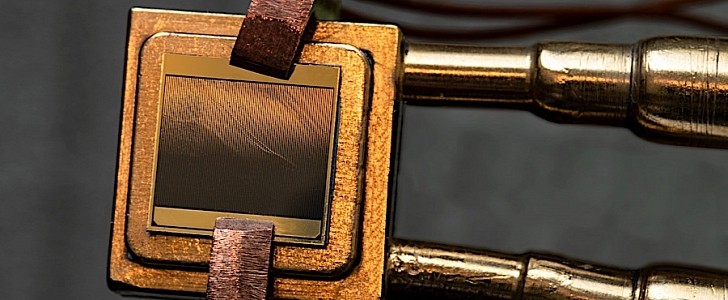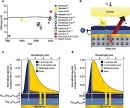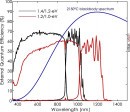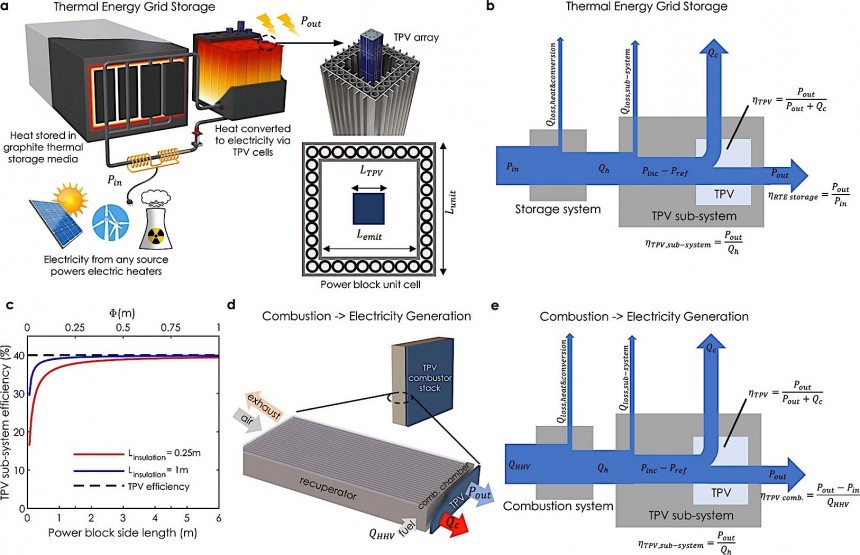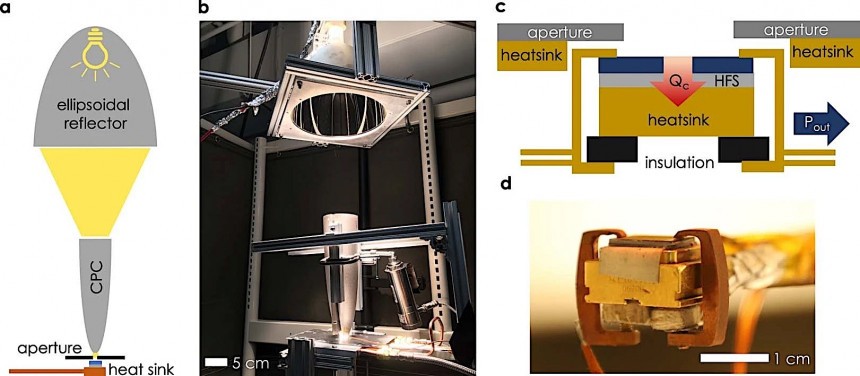There are so many paths we humans are running down in our chase for a greener future it’s extremely hard to keep track of everything. The auto industry is trying to go electric, either by means of batteries or hydrogen, the aviation industry is going for biofuels, while energy production and storage, well, this one is all over the place, betting on anything from the sun to the wind and nuclear.
Many of the technologies needed to switch from the harmful way of generating energy and motion to keep our civilization going to a cleaner one are already here, but that doesn’t mean there isn’t room for improvement. Quite the opposite, and scientists are working on alternative solutions, ideas that could truly transform our world.
One such idea comes our way courtesy of people over at the Massachusetts Institute of Technology (MIT) and the National Renewable Energy Laboratory (NREL), and it was published earlier this week in Nature.
The paper is titled “Thermophotovoltaic efficiency of 40%,” and talks about a technology meant to “convert predominantly infrared wavelength light to electricity via the photovoltaic effect,” but also store and convert said electricity. More importantly, the new tech could draw electricity from “higher temperature heat sources than the turbines that are ubiquitous in electricity production today.”
The hardware is nothing more than a thermophotovoltaic cell (TPV) that can be used for thermal energy grid storage (TEGS). It is, if you like, a backwards battery of sorts that soaks up electricity, turns it into high-temperature heat and stores it as such, then converts that back to electricity when the need for its use arises.
According to the people behind the idea, the TPV cell thus is actually a heat engine of sorts, with no moving parts, one that can easily “compete with turbines.” TPVs are 1.4/1.2 eV and 1.2/1.0 eV tandem devices, and they can operate at emitter temperatures of between 1,900 and 2,400 degrees Celsius (3,452 to 4,352 degrees Fahrenheit).
And they’re very effective at their job, too. According to the info in the published paper, the efficiency of this cell can be as high as 41.1 percent, but there are people saying that could be increased to about 50 percent – even the lower number is better than what steam turbines are capable of achieving.
TPVs are meant to form the backbone of the TEGS, a low-cost, grid-scale energy storage technology. How cheap? Scientists say it could cost as low as $10 per kWh (when a graphite storage medium is used) for long-duration energy storage, making this a serious competitor for fossil fuels.
The paper on this thermophotovoltaic “heat engine” is extremely long and technical, and if you have the stomach for it, you can find it in full here. If not, here’s all of the above in a nutshell: we’re talking about a new type of energy storage device, highly-effective at pumping out electricity out of nothing more than the heat it is also capable of storing.
According to the paper, needing no fossil fuels to generate electricity, once sufficiently widespread the solution could help rid the world of about 40 percent of CO2 emissions coming from the electricity grid, but also provide green electricity for the electric cars we’re all going to soon drive.
So, where are we with this? According to MIT, the large team behind the project proved their theories in small-scale experiments. The next step is to assemble and demonstrate a fully grown, fully functional system. There is no date set for when that may happen, nor do we have any idea when the technology will be ready for implementation. When (and if) it will, it’ll probably transform power storage and generation.
One such idea comes our way courtesy of people over at the Massachusetts Institute of Technology (MIT) and the National Renewable Energy Laboratory (NREL), and it was published earlier this week in Nature.
The paper is titled “Thermophotovoltaic efficiency of 40%,” and talks about a technology meant to “convert predominantly infrared wavelength light to electricity via the photovoltaic effect,” but also store and convert said electricity. More importantly, the new tech could draw electricity from “higher temperature heat sources than the turbines that are ubiquitous in electricity production today.”
The hardware is nothing more than a thermophotovoltaic cell (TPV) that can be used for thermal energy grid storage (TEGS). It is, if you like, a backwards battery of sorts that soaks up electricity, turns it into high-temperature heat and stores it as such, then converts that back to electricity when the need for its use arises.
And they’re very effective at their job, too. According to the info in the published paper, the efficiency of this cell can be as high as 41.1 percent, but there are people saying that could be increased to about 50 percent – even the lower number is better than what steam turbines are capable of achieving.
TPVs are meant to form the backbone of the TEGS, a low-cost, grid-scale energy storage technology. How cheap? Scientists say it could cost as low as $10 per kWh (when a graphite storage medium is used) for long-duration energy storage, making this a serious competitor for fossil fuels.
The paper on this thermophotovoltaic “heat engine” is extremely long and technical, and if you have the stomach for it, you can find it in full here. If not, here’s all of the above in a nutshell: we’re talking about a new type of energy storage device, highly-effective at pumping out electricity out of nothing more than the heat it is also capable of storing.
So, where are we with this? According to MIT, the large team behind the project proved their theories in small-scale experiments. The next step is to assemble and demonstrate a fully grown, fully functional system. There is no date set for when that may happen, nor do we have any idea when the technology will be ready for implementation. When (and if) it will, it’ll probably transform power storage and generation.
